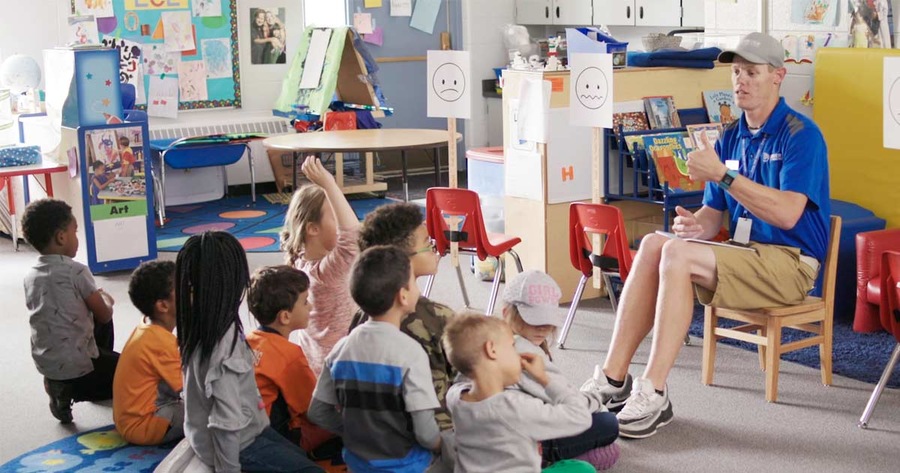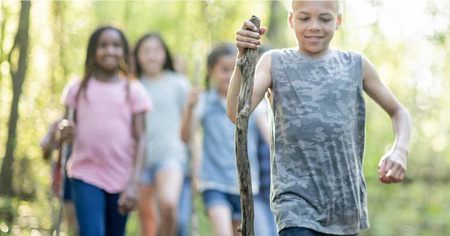Research demonstrates that when OST participants have the opportunity to connect with supportive staff and take part in fun and challenging activities with their peers, they see significant gains in personal development (Heath et al. 2018; Mahoney et al. 2009; Eccles and Templeton 2002; National Research Council and Institute of Medicine 2002).
Often, the social-emotional learning support participants receive is implicit. The activities built into most OST programs are inherently social and simply by participating youths receive extensive opportunity to learn SEL skills through observation and practice those skills through trial and error. This is the traditional way SEL skills are acquired and for many, it's generally effective. For other youth, though, exposure to implicit SEL content isn't enough. For these youth, participating in an OST program with an explicit SEL component can support their development.
Fortunately, OST programs are ideally positioned to meet this need. The same supportive, social aspects of OST that support exposure to implicit SEL content also make an ideal venue for explicit SEL. Putting together effective SEL programming, though, requires thoughtful planning and implementation. Research has identified four recommended practices OST providers should consider when creating SEL programming. These four practices form the acronym S.A.F.E. (Durlak, Weissberg, & Pachan, 2010):
Sequenced: The program uses a connected and coordinated set of activities to achieve its objectives.
SEL skills cannot be acquired all at once. It takes time to learn new behaviors and some skills, such as problem-solving, are complicated and must be broken down into small chunks. In order to accommodate this, SEL programming should have a clear sequence of activities that build on one another, giving participants the opportunity to master the skills taught.
Active: The program uses active forms of learning to help youth learn and practice new skills.
Simply being told about SEL skills, or discussing them in theory, is seldom enough to elicit behavior change in youths. Effectively incorporating SEL skills into daily living requires actively practicing the skills. This often takes the form of roleplaying or other behavior rehearsal strategies, with participants trying out new skills on their way to mastery.
Focused: The program has at least one component devoted to developing personal or social skills.
Specific time should be set aside exclusively for SEL programming. This allows participants to give SEL the attention it needs in order to be learned. How much time needs to be set aside will vary depending on the particular SEL skill being taught.
Explicit: The program targets specific SEL skills rather than targeting positive development in general terms.
It's important that participants know what they're trying to learn. The goals of any SEL programming should be clearly laid out in language both staff and participants can understand.
When SEL programming incorporates all four of the S.A.F.E. practices, it is significantly more likely to positively impact participants' SEL development; specifically, their self-perceptions, sense of belonging at school, prosocial behaviors, and academic achievement. These outcomes are in line with similar data on the effect of high-quality SEL instruction delivered in schools (Durlak et al. 2011).
Developing S.A.F.E. SEL programming doesn't need to be complicated to design, nor does it need to be difficult to implement. With thoughtful planning, high-quality intentional SEL is within the reach of any OST provider. And you don't have to do it alone, either. There are many resources available to help you bring explicit SEL to your program, including Committee for Children's forthcoming SEL program for Out-of-School Time settings. Learn more at Second Step.
Written by Matthew Pearsall, MAT.
Content and photo courtesy of Committee for Children.
References:
Durlak, J. A., Weissberg, R. P., & Pachan, M. (2010). A meta-analysis of after-school programs that seek to promote personal and social skills in children and adolescents. American Journal of Community Psychology, 45, 294–309.
Durlak, J. A., Weissberg, R. P., Dymnicki, A. B., Taylor, R. D., & Schellinger, K. (2011). The impact of enhancing students' social and emotional learning: A meta-analysis of school-based universal interventions. Child Development, 82, 405-432.
Eccles, J. S., & Templeton, J. (2002). Extracurricular and other after-school activities for youth. Review of Research in Education, 26,113–180.
Heath, R., Anderson, C., Cureton Turner, A., & Payne, C. (2018). Extracurricular Activities and Disadvantaged Youth: A Complicated—But Promising—Story. Urban Education.
Mahoney, J. P., Parente, M. E., & Zigler, E. F. Afterschool program participation and children's development. In J. Meece &J. Eccles (Eds.), Handbook of research on schools, schooling, and human development. New York: Wiley (2009)




